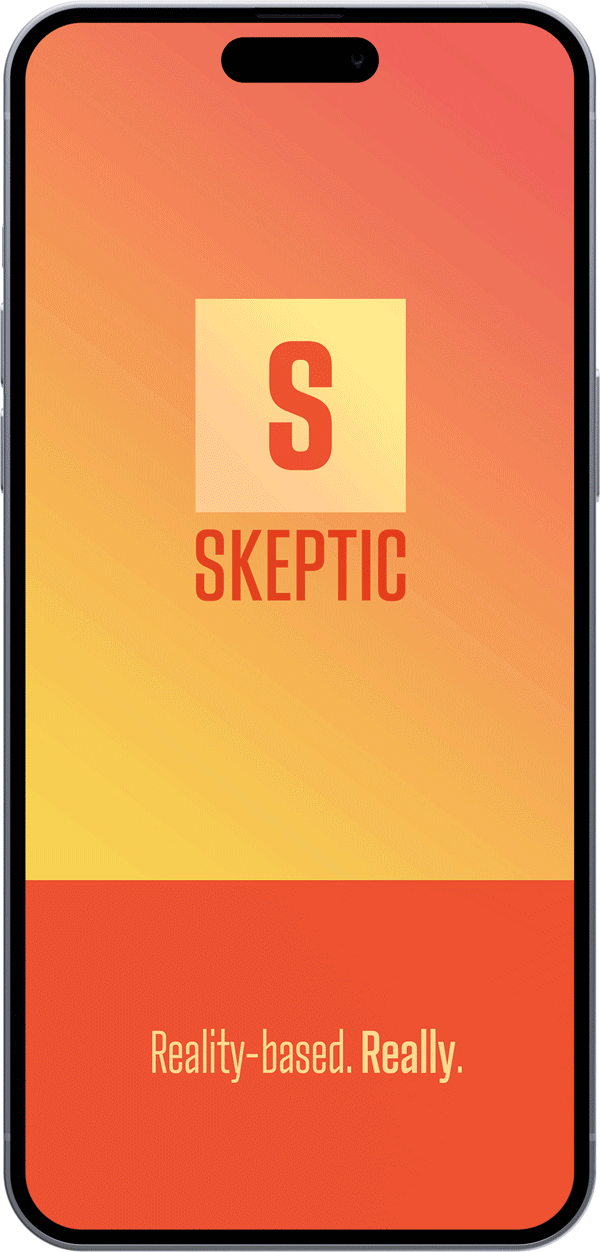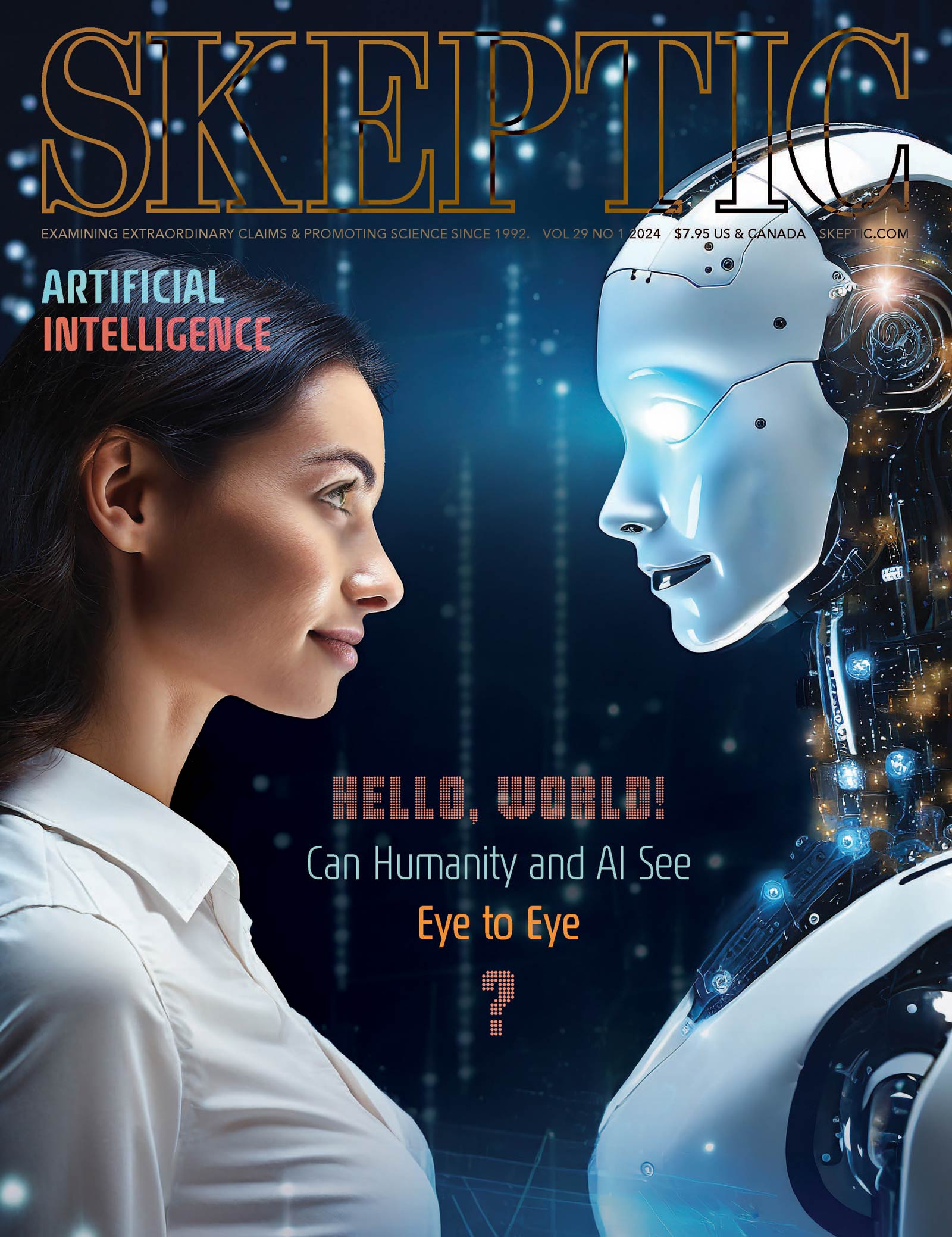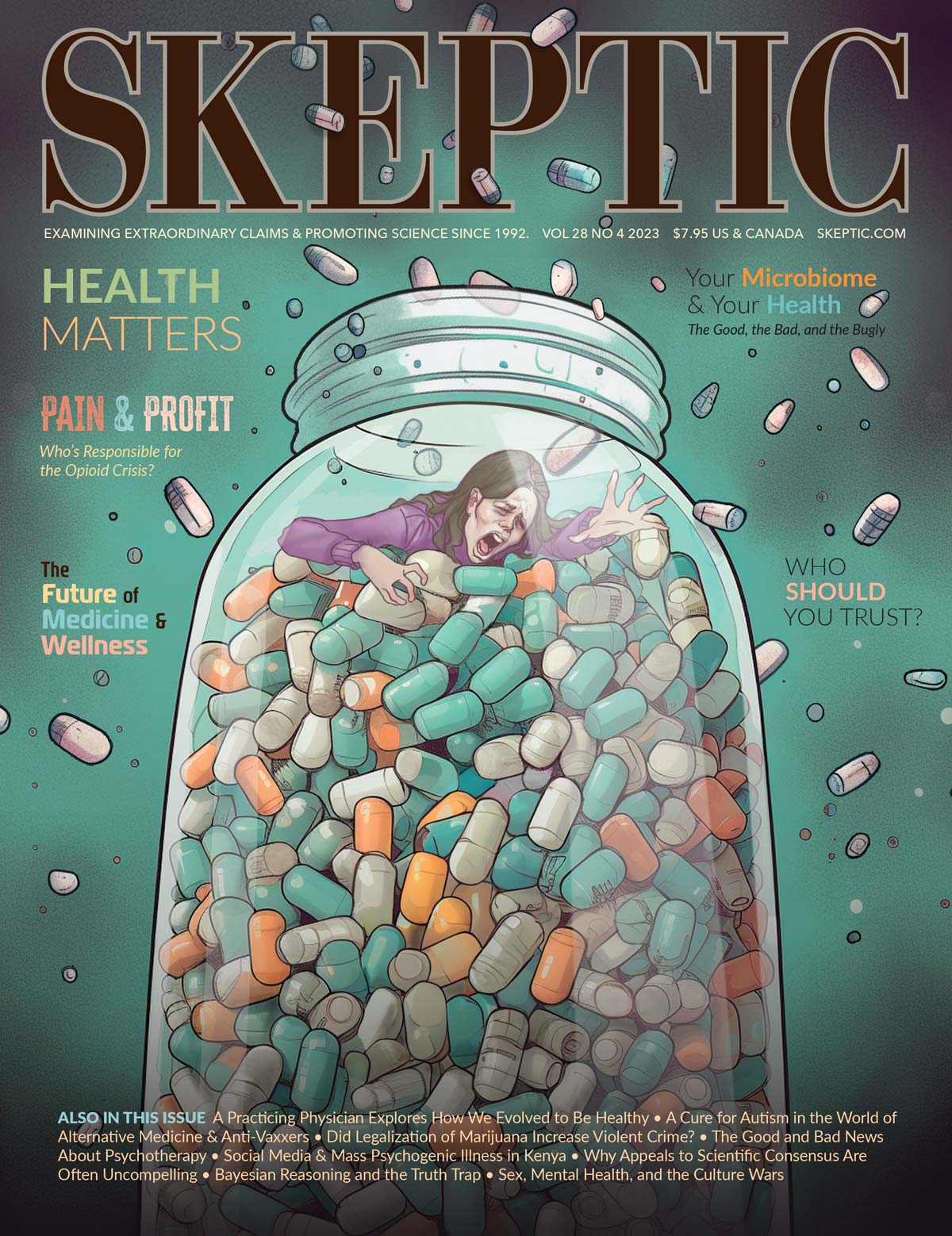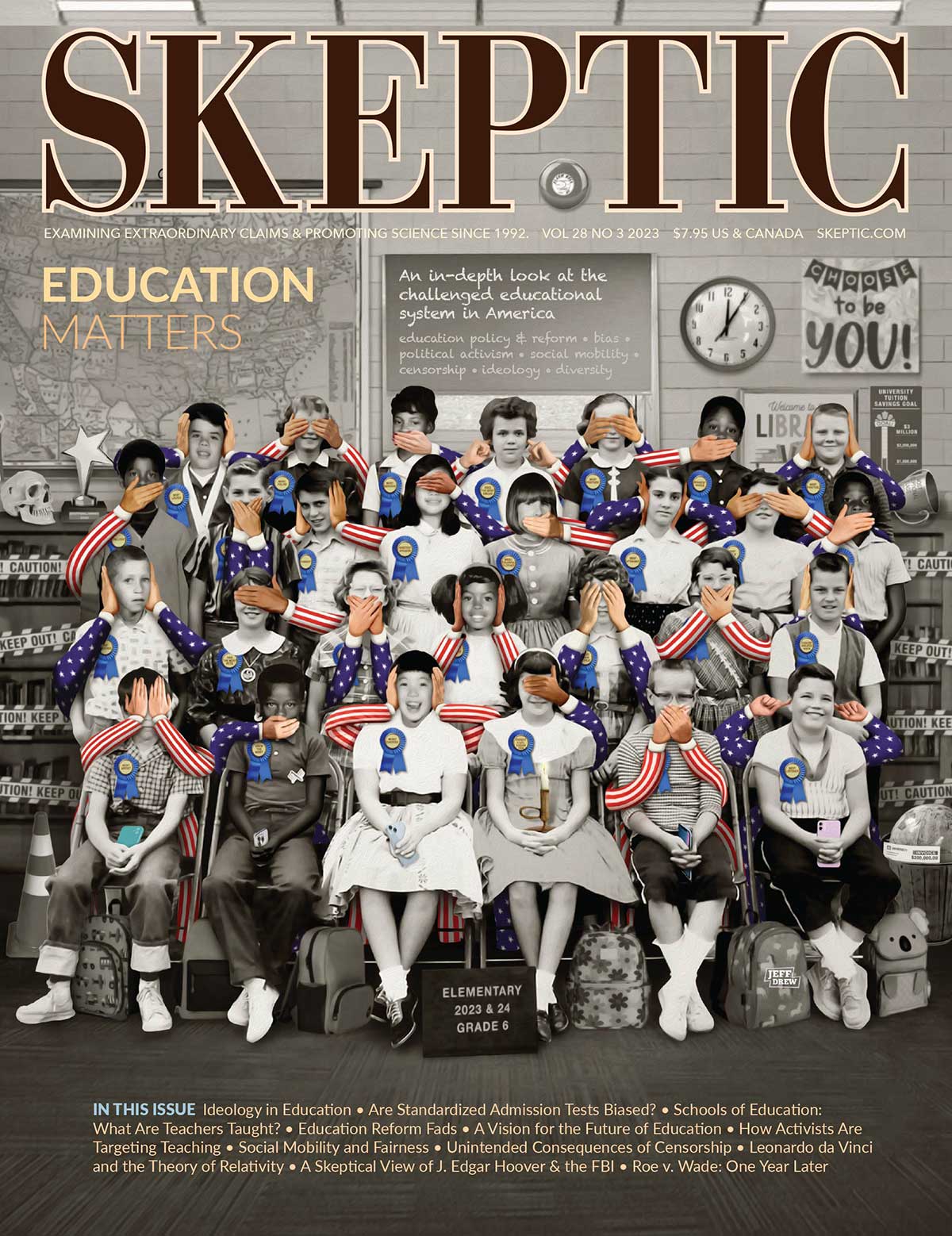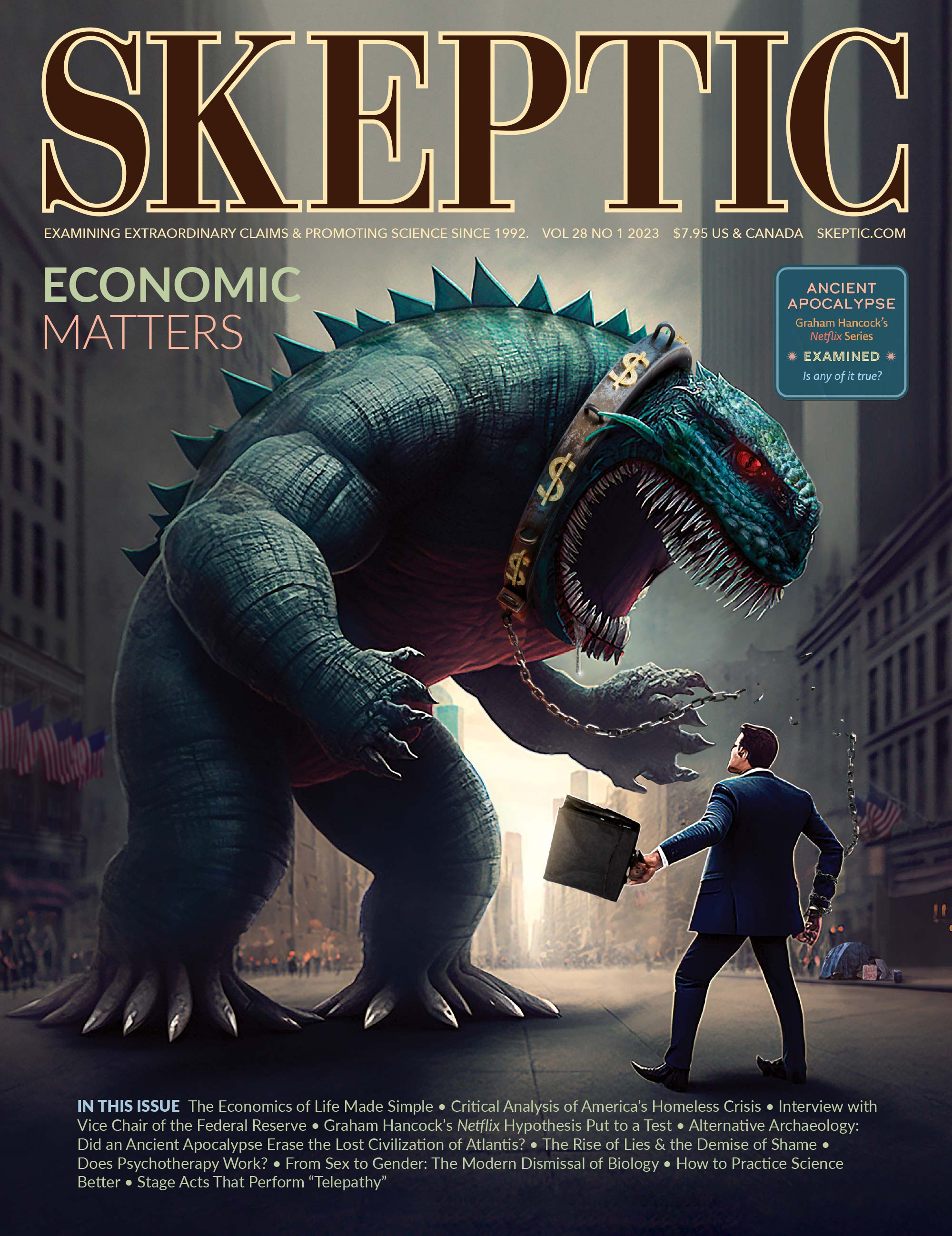The course will emphasize principles of skeptical inquiry, scientific reasoning, and scientific evidence to prepare students to critically analyze promotional claims made in the health marketplace for products, services, and practices. The course is designed to help students distinguish health-related fact from fiction and to spot health-related schemes, scams, superstitions, sensationalism, fads, fallacies, frauds, bunk, and bunco. Students will engage in critical thinking as they discuss how consumers can get good value for their health-related financial expenditures.
Skepticism 101
-
browse by
resource type
-
browse by
academic discipline
-
browse by
academic level
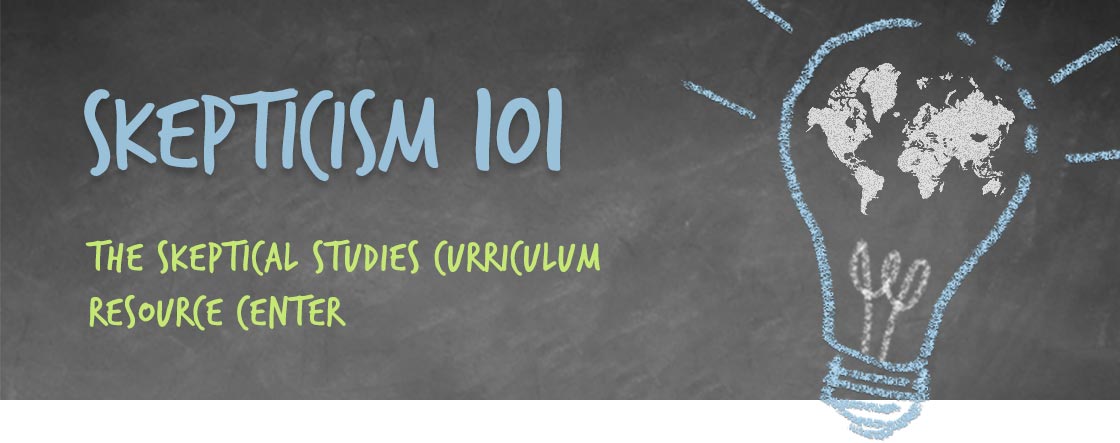
The Skeptical Studies Curriculum Resource Center is a comprehensive, free repository of resources for teaching students how to think skeptically. This Center contains a selection of books, reading lists, course syllabi, in-class exercises, PowerPoint presentations, student projects, papers, and videos that you may download and use in your own classes. Lessons in these resources include:
- what science is, how it differs from pseudoscience, and why it matters
- the scientific method and how to use it to investigate and conduct skeptical analyses of extraordinary claims
- how to construct effective arguments and rhetorical strategies
- how to effectively use presentations and papers to present an argument
- reason, logic, and skeptical analysis
- the psychology of belief
- how ideas are presented within academia
- how peer review works
- and much more…
Public Health & Skepticism
- Resource added on: Wednesday, August 7, 2013
- Submitted by: William London
Science of the Unexplained
- Resource added on: Wednesday, August 7, 2013
- Submitted by: Rob Martin and Maria Oehler
An interdisciplinary study of selected topics in the biological and physical sciences and their impact upon man and society, with the course format including seminar, discussion and projects. Topics will vary…. genetics, tissue culture, space, Malthusian theory, light, sound, and mechanics. This course will provides students with a unique opportunity to examine many common pseudoscientific fallacies, learn how the human brain has evolved to encourage paranormal beliefs, and challenge the students to confront their own biases as they apply the…
Skeptic Presents: You Can’t Handle the Truther
- Resource added on: Wednesday, August 7, 2013
We are pleased to present the third in our series of videos that promote science and critical thinking through the use of humor, wit, and satire. In this video, You Can’t Handle the Truther, CIA Agents plot the 9/11 attack on the Twin Towers and Pentagon. If you missed our first two videos, check them out: The Con Academy and B.Y.T.H Busters: The Secret Law of Attraction.
Skeptics Presents: B.Y.T.H. Busters
(The Secret Law of Attraction)
- Resource added on: Wednesday, June 26, 2013
We are pleased to present the second in a series of videos that promote science and critical thinking through the use of humor, wit, and satire. In this video, B.Y.T.H. Busters: The Secret Law of Attraction, Adam Average and Jamie Imtheman put the “Law of Attraction” to the test.
The Perks of Paranoia
- Resource added on: Monday, May 6, 2013
- Submitted by: Christopher Griffin
In this video project by Christopher Griffin, a senior Graphic Design student at the California College of the Arts (San Francisco), the pattern-seeking tendencies of true believers and conspiracy theorists are visually illustrated.
Skeptic Presents: The Con Academy
- Resource added on: Wednesday, April 17, 2013
- Submitted by: Michael Shermer & Brian Dalton
In this faux commercial for The Con Academy you’ll see how psychics count on the confirmation bias to convince people that their powers are real when, in fact, they are just remembering the hits and forgetting the misses. We also demonstrate how psychic “organizations” con people by taking their money for services that are not real
Science, Theory & Paradigm Shifts 3
- Resource added on: Thursday, April 11, 2013
- Submitted by: Bryan Lovelace
There are three lectures in this series, they are intended to educate students about the nature of science and the power of natural explanations. This is accomplished through the concept of the Paradigm Shift. The discussion begins with non-scientific views of nature and then follows the development of scientific views and how/why they changed over many hundreds of years. This post concerns the third lecture in the series.
Science, Theory & Paradigm Shifts 2
- Resource added on: Thursday, April 11, 2013
- Submitted by: Bryan Lovelace
There are three lectures in this series, they are intended to educate students about the nature of science and the power of natural explanations. This is accomplished through the concept of the Paradigm Shift. The discussion begins with non-scientific views of nature and then follows the development of scientific views and how/why they changed over many hundreds of years. This post concerns the second lecture in the series.
Science, Theory & Paradigm Shifts 1
- Resource added on: Thursday, April 11, 2013
- Submitted by: Bryan Lovelace
There are three lectures in this series, they are intended to educate students about the nature of science and the power of natural explanations. This is accomplished through the concept of the Paradigm Shift. The discussion begins with non-scientific views of nature and then follows the development of scientific views and how/why they changed over many hundreds of years. This post concerns the first lecture in the series.
The Moral Arc of Science
- Resource added on: Thursday, April 11, 2013
- Submitted by: Michael Shermer
This course addresses the evolutionary origins of morality, the developmental psychology of moral emotions, the historical course of moral development throughout the history of civilization, and the forces that have bent the arc of the moral universe toward truth, justice, freedom, and prosperity.
Popular Archeology: Myths & Mysteries
- Resource added on: Thursday, April 11, 2013
- Submitted by: David Carmichael
This course is designed to introduce students to a variety of critical thinking skills and to encourage them to practice those skills in the context of evaluating popular claims, especially extraordinary claims about topics relevant to anthropology and archeology. It is intended for students who are attracted to the interesting topics identified with anthropology in the popular media, but the level of instruction assumes no prior experience in anthropology. Students will learn about the methods used to interpret the physical…
The Rhetoric of Extraordinary Claims
- Resource added on: Saturday, April 6, 2013
- Submitted by: Peter Marston
One of the characteristics of contemporary American popular discourse is a marked increase in irrationalism. Belief in the paranormal, pseudoscience, and millenialism is perhaps more prevalent than at any other time in the history of Western Civilization. This course seeks to test these beliefs through the application of rhetorical analysis and critical thinking to discourse advancing extraordinary claims.
Critical & Scientific Thinking
in the High School Classroom
- Resource added on: Friday, April 5, 2013
- Submitted by: Michael Dean
In my classroom, I utilize many non‐fiction science books published for general audiences. I refer to many more as part of my presentations and even have a “book of the week” that relates to our lessons in some way. There is, however, one book that stands out. I use the entire book and my lesson was actually built around the text. The book is Don’t Believe Everything You Think: The 6 Basic Mistakes We Make in Thinking by Thomas Kida.
Health & Skepticism
- Resource added on: Thursday, April 4, 2013
- Submitted by: William London
An introduction to skeptical inquiry as a foundation for drawing sound conclusions about popular claims made about health-related lifestyle practices, practitioners, facilities, products, services, and information portals. Healthy skepticism emphasizes careful consideration of scientific evidence and knowledge, and human susceptibility to deception and misperception.
Pseudoscience & the Paranormal
- Resource added on: Friday, February 15, 2013
- Suggested by: Jeffrey Brookings
- Written by: Terence Hines
Popular culture fills the mind with a steady diet of fantasy, from tales of UFO landings and alien abductions, haunted houses, and communication with the dead to claims of miraculous cures by spiritual healers and breakthrough treatments in ‘alternative’ medicine. The paranormal – and the pseudoscience that attempts to validate it – is so ubiquitous that many people lose sight of the distinction between the real and the imaginary, and some never learn to make the distinction in the first…
Don’t Believe Everything You Think:
The 6 Basic Mistakes We Make in Thinking
- Resource added on: Friday, February 15, 2013
- Suggested by: Thomas Holtz, John Merck and Jeffrey Brookings
- Written by: Thomas Kida
This enlightening book discusses how to recognize faulty thinking and develop the necessary skills to become a more effective problem solver. Author Thomas Kida identifies “the six-pack of problems” that leads many of us unconsciously to accept false ideas: 1. We prefer stories to statistics. 2. We seek to confirm, not to question, our ideas. 3. We rarely appreciate the role of chance and coincidence in shaping events. 4. We sometimes misperceive the world around us. 5. We tend to…
Asking the Right Questions: A Guide to Critical Thinking
- Resource added on: Friday, February 15, 2013
- Suggested by: Stephen Sekula, John Cotton, and Randall Scalise
- Written by: M. Neil Browne & Stuart M. Keeley
Used in a variety of courses in various disciplines, Asking the Right Questions helps bridge the gap between simply memorizing or blindly accepting information, and the greater challenge of critical analysis and synthesis. Specifically, this concise text teaches how to think critically by exploring the components of arguments–issues, conclusions, reasons, evidence, assumptions, language–and on how to spot fallacies and manipulations and obstacles to critical thinking.
Philosophy 41: Critical Thinking
- Resource added on: Wednesday, December 12, 2012
- Submitted by: Jessica Saito
The following three assignments are from the course, “Philosophy 41: Critical Thinking” taught at Los Medanos College in fall 2011 by Jennifer Saito.
Seminar: Science versus Pseudoscience
- Resource added on: Wednesday, December 12, 2012
- Submitted by: Caleb Lack
My goal for this course is to have each student leave with increased critical thinking and reasoning skills and the ability to apply those skills in his or her environment. Specifically, this course will teach students how to apply empirical, scientific modes of thinking in explaining the causes of various phenomena, from everyday human behavior to supposedly paranormal events.
Biology of Love
- Resource added on: Wednesday, December 12, 2012
- Submitted by: Randy Ludwig
This is an overview of the biological influences on sex, love, and attraction. It includes research on the types of love and which brain areas and chemicals are involved in those expereinces. This presentation was created by Randy Ludwig for Dr. Michael Shermer’s course
SKEPTIC App
Whether at home or on the go, the SKEPTIC App is the easiest way to read your favorite articles. Within the app, users can purchase the current issue and back issues. Download the app today and get a 30-day free trial subscription.

